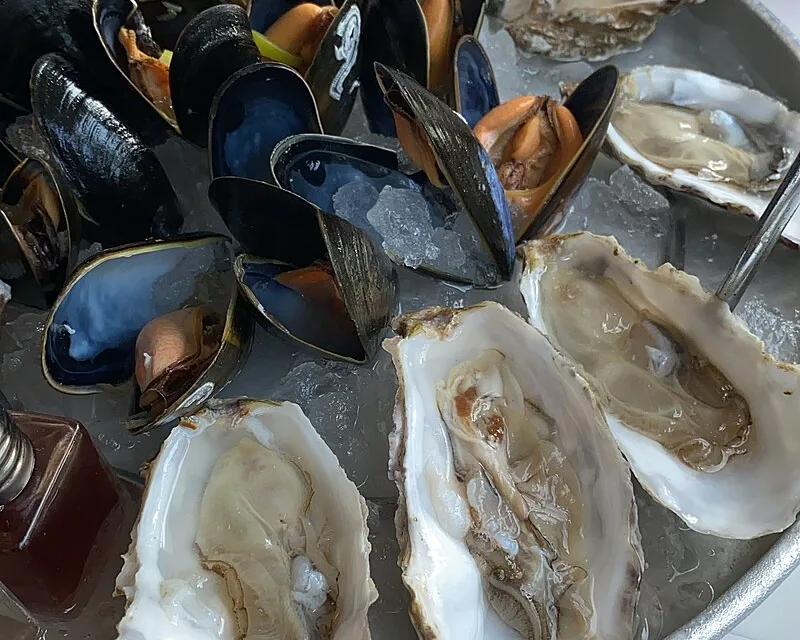Oysters are a type of mollusk found in marine or brackish waters. They are bivalves, meaning they have a hinged shell with two halves. Here’s a detailed description of oysters:
Anatomy and Characteristics:
- Shell: Oysters have rough, irregular shells that can vary in color from grey to white or brown. The inside of the shell is smooth and usually white or pearly.
- Body: The oyster’s body is soft and encased within the shell. It consists of the mantle, gills, and various organs, all of which are edible.
- Pearls: Some species of oysters can produce pearls, although not all oysters are known for this.
Habitat:
- Environment: Oysters thrive in coastal waters, often attaching themselves to rocks, piers, or other hard surfaces.
- Salinity: They prefer areas with a mix of fresh and saltwater, which is why they are often found in estuaries.
Types of Oysters:
- Pacific Oysters (Crassostrea gigas): Commonly found in Asia and the Pacific Northwest, known for their briny flavor.
- Eastern Oysters (Crassostrea virginica): Native to the East Coast of the United States, often found in the Gulf of Mexico.
- European Flat Oysters (Ostrea edulis): Known as Belon oysters, these are native to Europe and have a distinct, strong flavor.
Culinary Uses:
- Raw: Often served on the half shell with lemon, cocktail sauce, or mignonette.
- Cooked: Can be grilled, fried, baked, or used in stews and chowders.
- Flavor Profile: Oysters have a unique taste that can range from sweet to salty and briny, depending on their origin.
Nutritional Value:
- Rich in Nutrients: High in protein, omega-3 fatty acids, and various vitamins and minerals such as zinc and vitamin B12.
- Low in Calories: Oysters are a low-calorie food, making them a healthy choice.
Ecological Importance:
- Water Filtration: Oysters filter water, removing pollutants and improving water quality.
- Habitat Creation: Oyster reefs provide habitats for various marine life and help protect shorelines from erosion.
Oysters are celebrated for their culinary versatility and ecological benefits, making them a popular choice in many cuisines worldwide.
Image from Wikipedia






Recent Comments